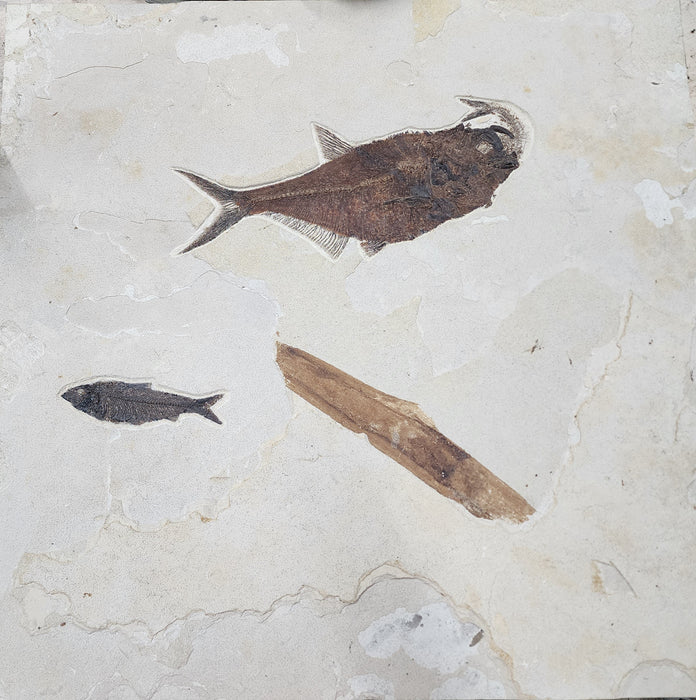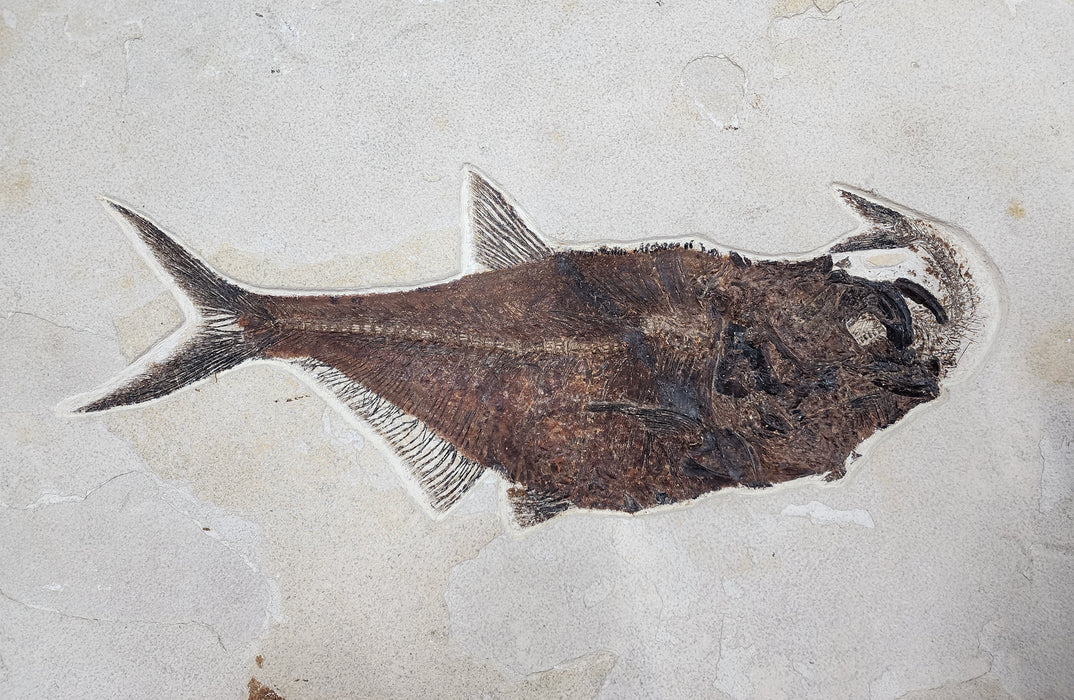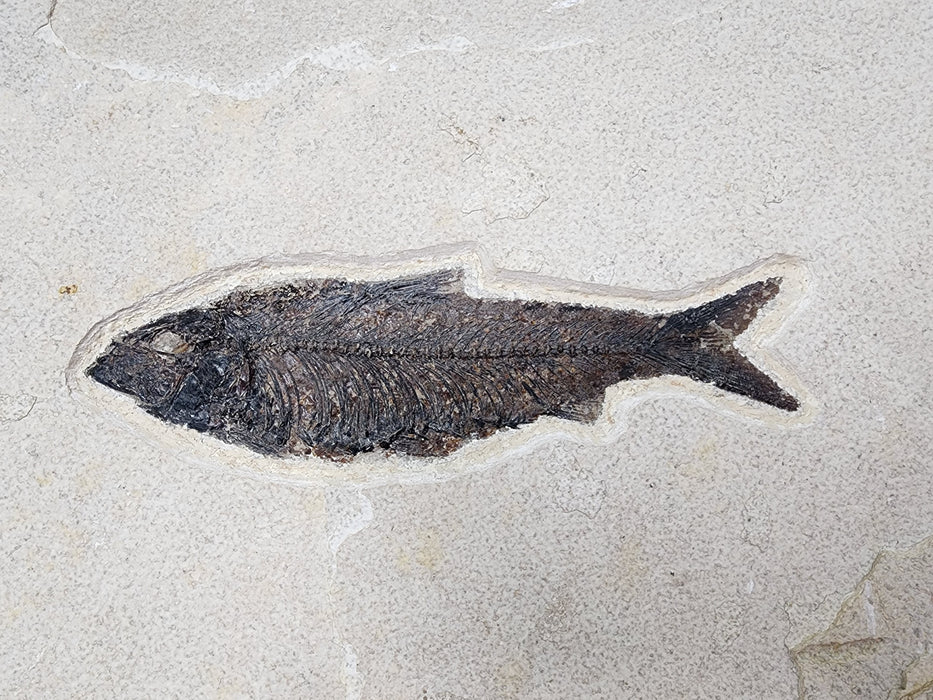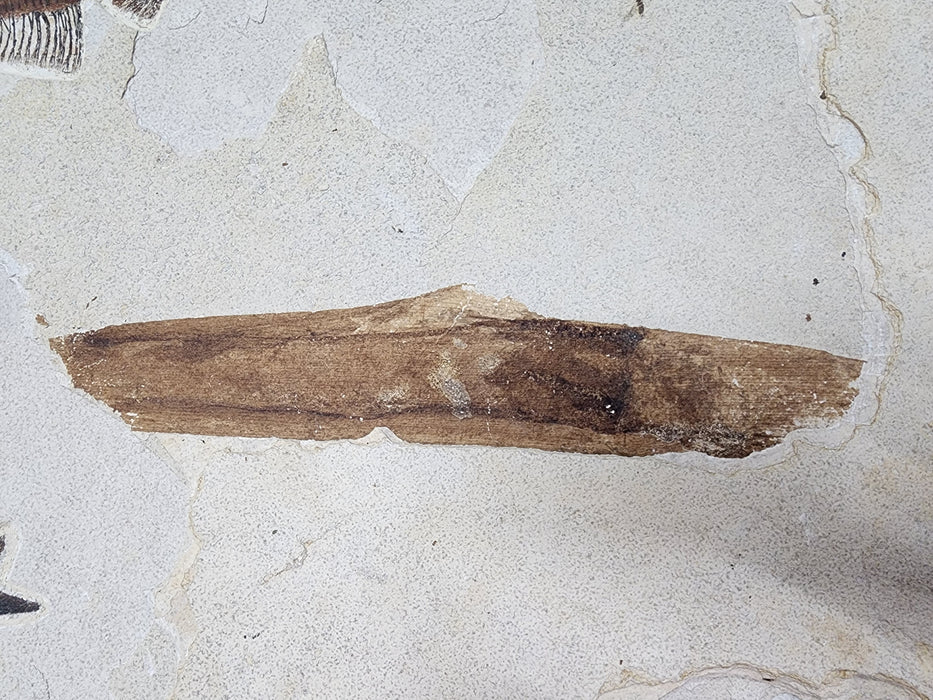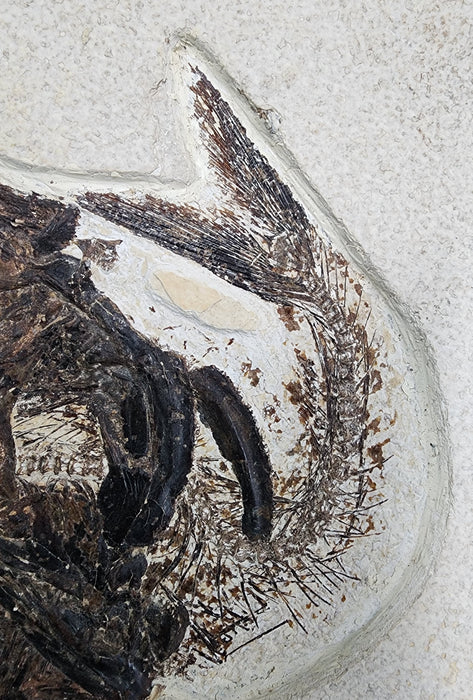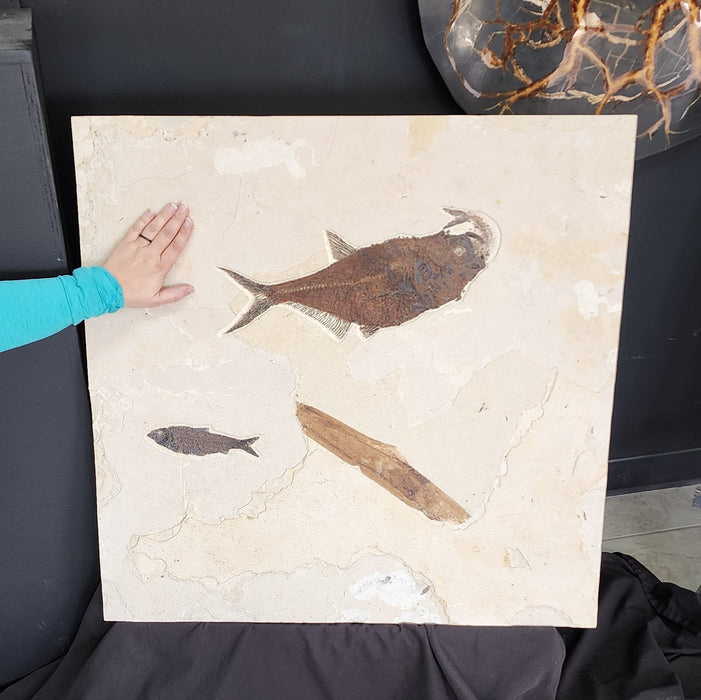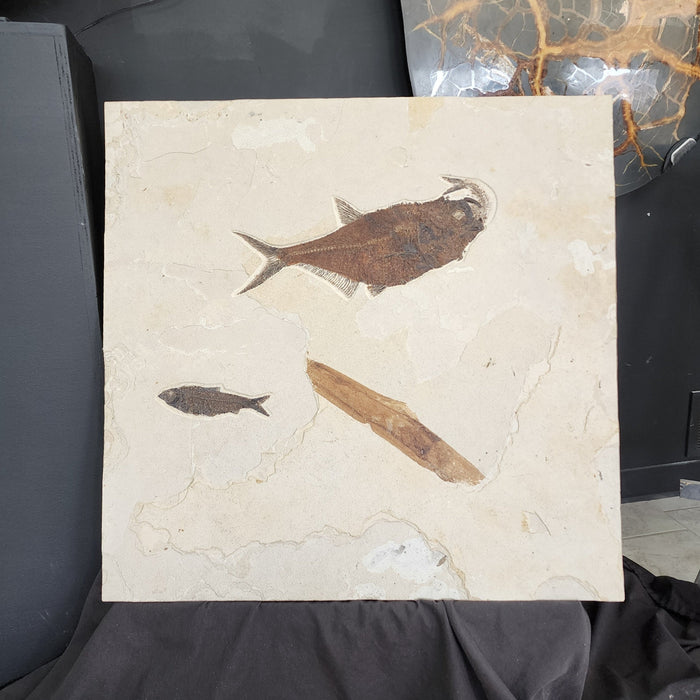
Fossil Fish Aspiration | Diplomystus dentatus eating a Knightia eocaena with additional Knightia eocaena and vegetation| Green River Formation | Wyoming
Specimen sizes:
Diplomystus approx: 17.25"
Knightia eocaena approx: 7.5"
Vegetation approx: 14" x 2.5"
Matrix approx. size: 32.75" x 33.5"
Known as an aspiration, this fossil captures a Diplomystus that died trying to swallow its prey whole. The prey fish (Knightia) was too large for the Diplomystus to swallow, and it literally choked to death on it. The tail of the prey fish can be seen sticking out of the Diplomystus' mouth. You can also see the body of the prey fish inside of the Diplomystus.
Due to the size of this specimen, it will be shipped in an internationally compliant wooden crate. The plate itself is backed with 3/4" plywood for durability and easy wall hanging. We recommend a french cleat system for hanging purposes.
Something that is noteworthy about this piece is that the prey Knightia eocaena is upside down in the predator's mouth. It is believed that this prey Knightia eocaena was already dead when it was eaten. The theory is that the predator Diplomystus scavenged rather than actively hunted its prey in this instance.
Diplomystus is an extinct genus of freshwater clupeomorph fish distantly related to modern-day extant herrings, alewives, and sardines. The genus was first named and described by Edward Drinker Cope in 1877.
Ray-finned Fish - Diplomystus dentatus
Order Ellimmichthyiformes, Family Paraclupeidae
The last known species of the Ellimmichthyiformes order went extinct sometime in the middle Eocene. D. dentatus is a primitive relative of the modern day herring. The genus Diplomystus is also known from fossil deposits in China.
D. dentatus is the 2nd most common fossil fish found from Fossil Lake. Specimens ranging from embryonic size (about 0.7 inches) to full-grown adults (about 26 inches) are common. Smaller-sized specimens are more commonly found in mid-lake than near-shore deposits. This suggests that D. dentatus spawned in open water.
This species' upturned mouth indicates it fed at the surface of Fossil Lake. D. dentatus specimens are commonly found with other fish stuck in their mouths, including other D. dentatus specimens.
Knightia is an extinct genus of clupeid bony fish that lived in the freshwater lakes and rivers of North America and Asia during the Eocene epoch. The genus was erected by David Starr Jordan in 1907, in honor of the late University of Wyoming professor Wilbur Clinton Knight, "an indefatigable student of the paleontology of the Rocky Mountains." It is the official state fossil of Wyoming, and the most commonly excavated fossil fish in the world.
Knightia belongs to the same taxonomic family as herring and sardines, and resembled the former closely enough that both Knightia alta and Knightia eocaena were originally described as species of true herring in the genus Clupea.
As with modern-day clupeids, Knightia spp. likely fed on algae and diatoms, as well as insects and occasionally smaller fish.
Anatomy
In Knightia fish, rows of dorsal and ventral scutes run from the back of the head to the medial fins. They had heavy scales and small conical teeth. Their size varied by species: Knightia eocaena was the longest, growing up to 25 cm (10 in), though most specimens are no larger than 15 cm. K. alta was shorter and relatively wider, with specimens averaging between 6 and 10 cm.
Predators
A small schooling fish, Knightia made an abundant food source for larger Eocene predators. The Green River Formation has yielded many fossils of larger fish species preying on Knightia; specimens of Diplomystus, Lepisosteus, Amphiplaga, Mioplosus, Phareodus, Amia, and Astephus have all been found with Knightia in either their jaws or stomachs.

